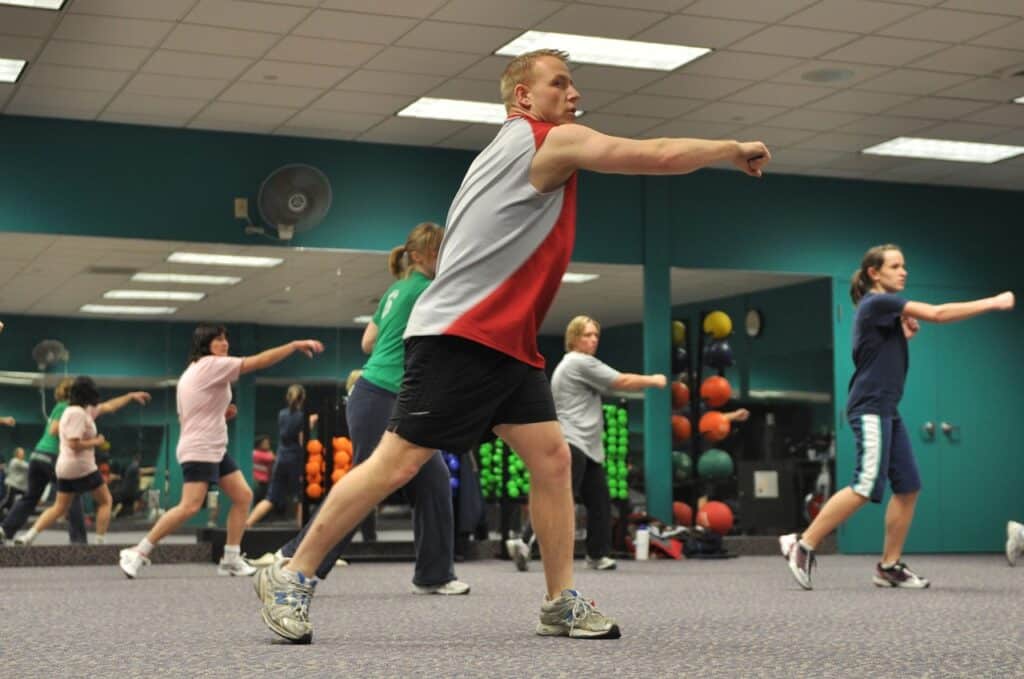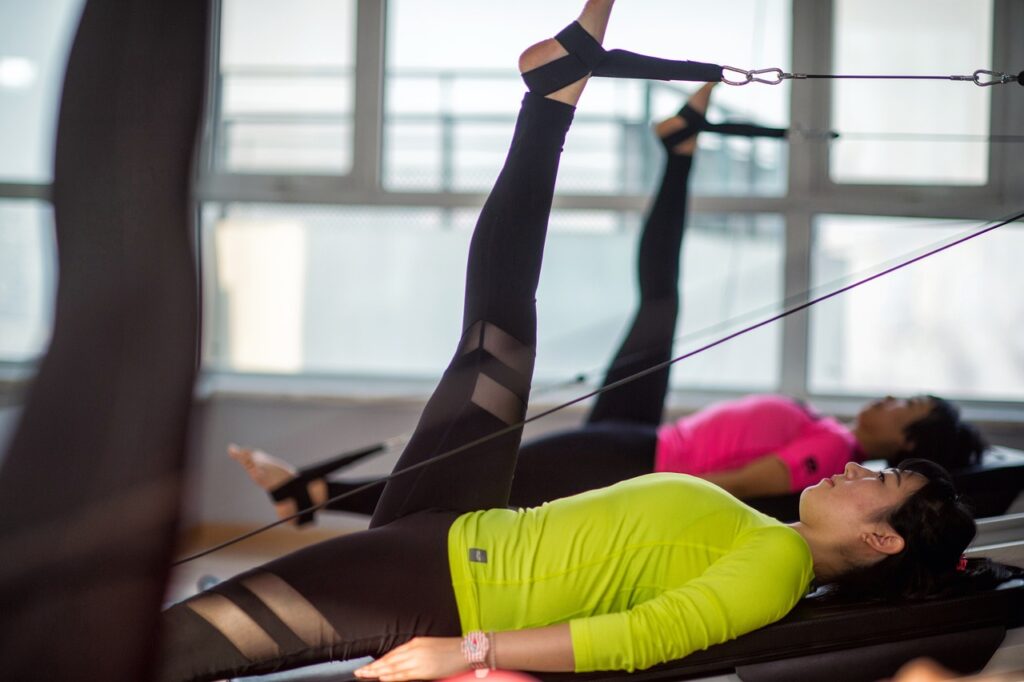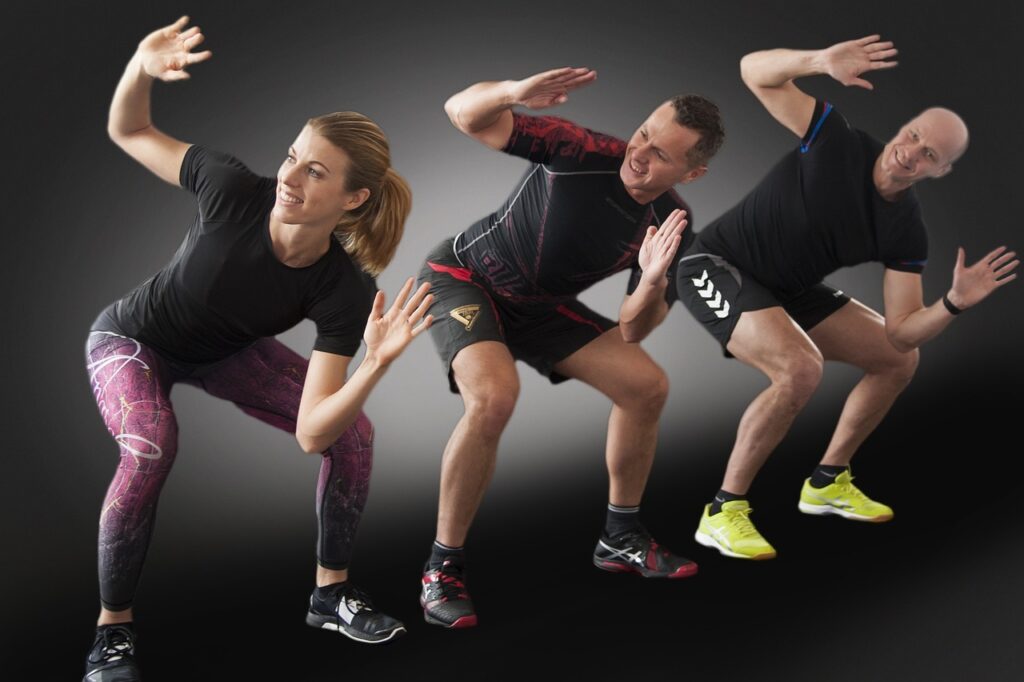
Introduction
Benefits of Fitness
Regular physical activity is essential to maintaining good health and well-being. Fitness has numerous benefits for both physical and mental health, and it can help prevent and manage many chronic diseases. In this section, we will discuss the physical and mental benefits of fitness.
Physical Benefits
Fitness has several physical benefits, including:
- Weight management: Regular exercise can help manage weight and prevent obesity.
- Improved cardiovascular health: Exercise can improve heart health by strengthening the heart muscle and reducing the risk of heart disease.
- Stronger muscles and bones: Exercise can help build and maintain muscle mass and bone density, reducing the risk of osteoporosis and fractures.
- Better flexibility and balance: Stretching and balance exercises can improve flexibility and balance, reducing the risk of falls and injuries.
- Improved body composition: Regular exercise can help reduce body fat and increase lean muscle mass.
Mental Benefits
Fitness also has several mental benefits, including:
- Improved mood: Exercise can boost mood and reduce symptoms of anxiety and depression.
- Reduced stress: Regular physical activity can help reduce stress levels and improve overall mental health.
- Better cognitive function: Exercise can improve cognitive function and reduce the risk of cognitive decline with aging.
- Improved sleep: Regular exercise can improve sleep quality and duration, reducing the risk of sleep disorders.
Research advancements have also shown that regular exercise can help prevent and manage many chronic diseases, including type 2 diabetes, hypertension, and certain types of cancer.
Overall, incorporating regular fitness activities into a workout routine can have many health benefits. To achieve fitness goals, it is essential to engage in a variety of workouts, including cardio, strength training, and stretching exercises. It is also important to listen to your body, balance workouts with rest and recovery, and seek guidance from a healthcare professional if needed.
In the current health climate, it is important to maintain a healthy lifestyle, including regular exercise, to support overall health and immune function during the COVID-19 pandemic. Mayo Clinic suggests following health tips, including maintaining a healthy diet, staying hydrated, and engaging in regular physical activity, to support overall health and wellness.

Types of Fitness
When it comes to fitness, there are several types that individuals can focus on to achieve a well-rounded workout routine. These types include cardiovascular fitness, strength training, flexibility training, and balance training. Each type of fitness has its unique benefits and can be incorporated into a workout routine to achieve specific fitness goals.
Cardiovascular Fitness
Cardiovascular fitness, or cardio, is essential to a healthy workout routine. It involves activities that increase the heart rate and improve the body’s ability to use oxygen efficiently. Cardio exercises include running, cycling, swimming, and dancing. Regular cardio workouts can help improve heart health, reduce the risk of chronic diseases, and aid in weight loss.
Strength Training
Strength training involves exercises that target the muscles to increase strength, endurance, and body composition. These exercises may include weightlifting, resistance band workouts, and bodyweight exercises like push-ups and squats. Strength training can help increase muscle mass, improve bone density, and aid in weight loss. It can also help reduce the risk of injury and improve sports performance.
Flexibility Training
Flexibility training involves exercises that stretch the muscles and improve the joint range of motion. These exercises may include yoga, Pilates, and static stretching. Flexibility training can help improve posture, reduce the risk of injury, and aid in recovery after workouts. It can also help reduce stress and improve overall health.
Balance Training
Balance training involves exercises that improve balance and stability. These exercises may include standing on one foot, using a balance board, and practicing yoga poses that challenge balance. Balance training can help reduce the risk of falls, improve sports performance, and aid in injury recovery.
Incorporating all types of fitness into a workout routine can help individuals achieve their fitness goals and improve overall health. It is recommended to consult with a healthcare professional or certified fitness trainer to develop a personalized workout plan that meets individual needs and fitness goals.
Nutrition plays a crucial role in any fitness routine. Proper nutrition can help fuel workouts, aid in recovery, and support overall health. In this section, we will discuss the dietary needs of fitness enthusiasts and the role of supplements in achieving fitness goals.

Dietary Needs
When it comes to fitness, the body requires a balance of macronutrients and micronutrients to function optimally. Macronutrients include carbohydrates, proteins, and fats, while micronutrients include vitamins and minerals.
Carbohydrates provide energy for workouts, while proteins aid in muscle repair and growth. Fats are also important for energy production and hormone regulation. It is recommended that individuals consume a diet that is balanced in all three macronutrients.
In addition to macronutrients, micronutrients are also essential for overall health and fitness. Vitamins and minerals play important roles in energy production, immune function, and bone health. Eating a variety of fruits, vegetables, whole grains, and lean proteins can help ensure that individuals are getting all the necessary micronutrients.
Supplements
While a balanced diet can provide all the necessary nutrients for fitness enthusiasts, some individuals may benefit from supplements. Supplements can help fill nutrient gaps and support specific fitness goals.
For example, athletes training for endurance events may benefit from carbohydrate supplements to boost their energy and performance. Protein supplements can also aid in muscle recovery and growth after workouts.
It is important to note that supplements should not replace a balanced diet. The best approach is to consult with a healthcare professional or registered dietitian to determine if supplements are necessary and which ones are appropriate.
In conclusion, nutrition is a key component of any fitness routine. A balanced diet that includes all necessary macronutrients and micronutrients can help fuel workouts, aid in recovery, and support overall health. Supplements can also be beneficial, but should not replace a balanced diet. It is important to consult with a healthcare professional or registered dietitian to determine the best approach for individual fitness goals.

Injuries and Recovery
Injuries are a common occurrence in fitness, whether it’s due to an accident or overuse. Recovery is an essential part of the healing process, and it’s crucial to do it correctly to prevent further damage.
Common Injuries
The most common injuries in fitness include ankle sprains, knee injuries, muscle strains, and shoulder injuries. These injuries can occur during any type of exercise, from weightlifting to running.
Ankle sprains are common in sports that involve quick changes in direction, such as basketball and soccer. Knee injuries, such as ACL tears, are common in sports that require jumping and landing, such as volleyball and basketball. Muscle strains can occur in any muscle, but they’re most common in the hamstrings and lower back. Shoulder injuries are common in weightlifting and sports that involve throwing.
Recovery Techniques
Recovery techniques vary depending on the injury, but some general guidelines can help speed up the healing process. The first step is always to rest and avoid further damage. Ice, compression, and elevation can help reduce swelling and pain.
After the initial rest period, it’s essential to start a rehabilitation program. This program should include exercises to improve range of motion, strength, and flexibility. A physical therapist can help design a program that’s tailored to the specific injury.
Active recovery is also an effective way to speed up the healing process. This involves low-intensity exercise, such as walking or swimming, to increase blood flow and promote healing.
In some cases, surgery may be necessary to repair the injury. After surgery, a rehabilitation program is crucial to ensure a full recovery.
Overall, injuries are a common occurrence in fitness, but proper recovery techniques can help speed up the healing process and prevent further damage. It’s essential to listen to your body and seek medical attention if necessary.

Motivation and Goal-Setting
Setting goals and staying motivated are crucial elements in achieving fitness and health goals. Without motivation, it can be challenging to stick to a workout routine or maintain a healthy lifestyle. In this section, we will discuss some tips on how to stay motivated and set effective fitness goals.
Staying Motivated
Motivation can come from various sources, including intrinsic motivation, such as the desire to improve health or feel better, or extrinsic motivation, such as rewards or recognition. Here are some tips to help stay motivated:
- Find a workout buddy or join a fitness class to stay accountable and motivated.
- Set small, achievable goals that can be accomplished within a short time frame.
- Celebrate small victories along the way to keep the motivation going.
- Mix up the workout routine to avoid boredom and burnout.
- Remember that progress takes time, and setbacks are a natural part of the journey.
Setting Fitness Goals
Setting fitness goals is an essential part of achieving overall health and fitness. Here are some tips on setting effective fitness goals:
- Make sure the goals are specific, measurable, achievable, relevant, and time-bound (SMART).
- Prioritize goals that align with personal values and motivations.
- Break down long-term goals into smaller, more manageable goals.
- Set realistic goals that take into account current fitness levels and limitations.
- Track progress regularly and adjust goals as needed.
According to the Mayo Clinic, research advancements have shown that setting goals can improve motivation and commitment, leading to better results. With the current health topics, such as COVID-19, staying motivated and setting fitness goals can help maintain overall health and well-being.
In addition to motivation and goal-setting, other factors such as proper stretching, balance, and recovery are also essential components of a well-rounded fitness routine. Cardio and weight loss are also common fitness goals that can improve heart rate and body composition.
Overall, staying motivated and setting effective fitness goals can help individuals achieve their desired health and fitness outcomes.
Regular Physical Activity
Engaging in regular physical activity is essential for maintaining good health and fitness. Physical activity produces improvements in an individual’s physical health, cognitive performance, and psychological well-being. Physical benefits include, but are not limited to, reduced risk for diseases, improvements in physical functioning, fitness, and overall quality of life.
To achieve optimal health and fitness, it is important to have a well-rounded workout routine that includes a variety of exercises such as cardio, strength training, and stretching. It is also important to maintain balance in your workout routine and to incorporate recovery days to prevent injury and promote muscle growth.
Weight loss is a common fitness goal, and while exercise can help with weight loss, it is important to also focus on nutrition and body composition. Nutrition plays a crucial role in physical fitness, and athletes may need to focus on specific vitamins and minerals for fitness performance, such as iron, vitamin D, and zinc.
Research advancements and health tips are constantly emerging in the field of physical activity, and it is important to stay up to date on current health topics such as COVID-19 and its impact on physical activity. The Mayo Clinic offers a wealth of information on physical activity and health, including resources for creating personalized workout plans and tips for staying motivated.
As individuals age, it is important to continue engaging in physical activity to maintain overall health and prevent age-related decline. Sports can also be a great way to stay active and socialize with others who share similar interests.
Conclusion
In conclusion, physical activity is crucial for maintaining good health and fitness. By incorporating a well-rounded workout routine, focusing on nutrition, and staying up to date on current health topics, individuals can achieve their fitness goals and live a healthy, active lifestyle.
Share via:

